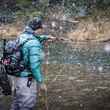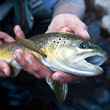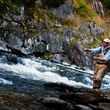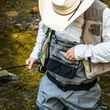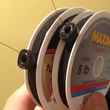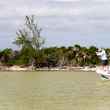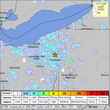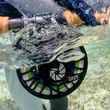When I stepped through the double entry doors under the small gable roof at the entrance to the Orvis Rod Factory last June, I expected to be greeted by old men with silver-gray beards, half-frame reading glasses, brass pocket watches, and full-length canvas shop aprons.
On a mission to build the world's most accurate fly rod
by Tim Schulz - Tuesday, Sep 12th, 2023




